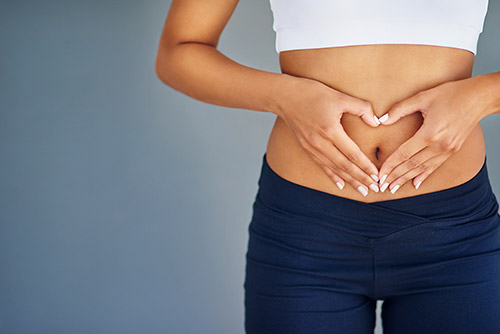Women’s Pelvic Health
Pelvic Pain
Discomfort that occurs in the lowest part of the torso, the area below the abdomen and between the hip bones
Dyspareunia
Painful and difficult intercourse
Urinary incontinence
Umbrella term to describe issues with regulating urination. These include stress incontinence, urge incontinence, and functional incontinence
Vulvodynia
Chronic vulvar pain without an identifiable cause
Pudendal Neuralgia
Pain in the genital or anal- rectal region that causes pain along the distribution of the pudendal nerve. Can cause a high amount of discomfort with sitting.
Pubic symphysis dysfunction
Pain in the pubic symphysis (joint in front of pelvis) due to instability or injury to the ligaments. Can commonly occur during pregnancy or postpartum.
Cystocele
When the bladder herniates into the vagina. Symptoms include feeling pressure in the pelvis and vagina, discomfort when straining, and feeling that the bladder hasn’t fully emptied after urinating.
Chronic constipation
Difficult, infrequent, or perceived incomplete evacuation of bowel movements
Enterocele
The peritoneal sac containing a portion of the small bowel extends into the rectovaginal space between the posterior surface of the vagina and the anterior surface of the rectum
Fecal incontinence
Loss of stools beyond one’s control
Fecal urgency
Sudden need to have a bowel movement with difficulty holding in stool before getting to a bathroom to void
Recurrent UTI
Once a urinary tract infection is cleared, pelvic floor muscle dysfunction may still remain mimicking symptoms of a urinary tract infection.
Ehlers Danlos Syndrome
Ehlers-Danlos syndrome is a group of inherited disorders that affect your connective tissues primarily your skin, joints and blood vessel walls.
Ehlers Danlos Syndrome
Ehlers-Danlos syndrome is a group of inherited disorders that affect your connective tissues primarily your skin, joints and blood vessel walls.
Hip Dysplasia
Congenital abnormal hip anatomical variations that result in reduced containment of the femoral head within the socket.
SI Joint Dysfunction
Pain within the area of the sacrum and sacroiliac joints at the base of the spine.
Stress Incontinence
Leaking of urine during activities such as coughing, sneezing, laughing, or exercising
Urge incontinence
Having an abnormal increased urge to urinate that can cause increased urinary frequency. Sometimes leakage of urine will occur before you make it to the bathroom.
Vaginismus
Painful spasmodic contraction of the vagina in response to physical contact or pressure. Commonly occurs during sexual intercourse
Diastisis recti
Separation of the abdominals, the rectus abdominus
Pelvic organ prolapse
General umbrella term that describes when a pelvic organ-such as your bladder drops (prolapses) from its normal place in your lower belly and pushes against the walls of your vagina
Rectocele
When the end of the large intestine (rectum) pushes through the back wall of the vagina. Symptoms include a soft bulge of tissue in the vagina that may or may not protrude through the vaginal opening. It may also cause difficulty with having a bowel movement.
Dyssynergic defecation
When attempting a bowel movement, the rectal pelvic floor muscles contract instead of lengthen appropriately.
Endometriosis
Painful disorder in which tissue that normally lines the inside of your uterus — the endometrium — grows outside your uterus
Levator ani syndrome
Episodic rectal pain caused by spasm of the levator ani muscle.
Lichen sclerosus
A chronic condition that causes thin, white patches of skin, usually in the genital area.
Interstitial Cystitis
A condition that causes discomfort or pain in the bladder and a need to urinate frequently and urgently.
Vulvar Vestibulitis
A subset of vulvodynia that is characterized by severe pain during attempted vaginal entry (intercourse or tampons insertion), tenderness to pressure localized to the vulvar vestibule and redness of the vulvar vestibule
Hip Labral Tear
Tear in the ring of cartilage along your hip joint rim known as the labrum
Physical therapy as part of the medical team can assist with healing and regaining function post the following pelvic surgeries or procedures:
- C section
- TVT procedure
- TOT procedure
- Anterior wall repair
- Botox injections to pelvic floor muscles
- Hysterectomy
- Endometriosis excision
- Hernia Repair
- Vestibulectomy
- Trigger point injections to pelvic floor muscles
- Oophrectomy
- Rectocele repair
- Bowel resection
- Hemorrhoidectomy
- Pudendal Nerve Release

